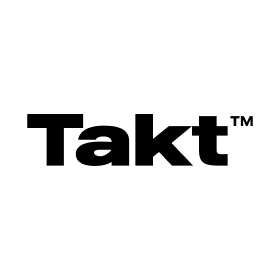
Thinking About Digitalization in Manufacturing? Here Are the Key Questions You Need to Ask
Where to start? That’s always the hardest part of taking on any new challenge, especially in manufacturing. And it’s the same when you decide to go digital. It’s even more complicated if you decide to outsource your software development with a dedicated team.
The market for digital manufacturing services is set to skyrocket from $387.65 billion in 2022 to an impressive $1,670.45 billion by 2031. This explosive growth is being driven by the benefits of digitalizing your traditional manufacturing services.
However, if you have yet to jump on the bandwagon, where is the best place to start? Well, that’s what I want to explore in today’s blog. I want to share information about the best way to start and advice on building the right team.
Step 1: Assess Your Current State and Goals
An astonishing 89% of companies are either embracing or planning to adopt a digital-first strategy. Yet, imagine going on a road trip without a map or a clear destination in mind—chaos would ensue. Similarly, diving headlong into digitalization without a clear plan is just as dangerous. Here are three areas you need to think about before even starting.
Where Are You Today?
Before setting off, take a look at where you are today. This includes business processes, systems, and challenges specific to manufacturing. The more detailed your insights, the better positioned your software partner will be. And the clearer you are about the now the more likely you’ll find the right software solution.
Where Do You Want to Be?
Approaching a software partner without a blueprint is less than ideal. While software experts can help you, starting with well-defined objectives helps the process. Define what you hope to achieve through digitalizing your manufacturing processes, setting clear, actionable goals.
What’s Holding You Back?
Identifying barriers early on is crucial. What processes are cumbersome or outdated? Are there daily routines that could hinder changes? Understanding these hurdles allows your software partner to create solutions. Digital transformation in manufacturing is complex, but thinking about challenges can smooth your path forward.
Step 2: The Questions You Really Need to Think About
Let’s dive a little deeper into the different areas of digital transformation in manufacturing. And explore some essential questions that can guide you through the planning process. By answering these questions, you will be in a better position to describe what you need to your software partner.
Where Are You Today?
- Current Business Strategy and Goals: Could you describe your business strategy and key objectives? How do you see digital transformation integrating with these goals in the manufacturing sector?
- IT Infrastructure Assessment: What does your existing IT infrastructure look like? Are there any legacy systems that might need integration or replacement? This is where IT asset management comes into play—helping you track, monitor, and optimize both hardware and software to ensure everything is in line with your evolving needs.
- Data Management Practices: How is data currently managed within your organization? What data governance policies or compliance issues need attention during the transformation?
- Employee Digital Skill: What is the current level of digital skill among your employees? Do you have a plan for training or acquiring extra expertise?
- Customer Engagement Review: How do you engage with your customers currently? What are the major pain points in their journey that digital transformation could address?
Where Do You Want to Be?
- Digital Goals and Objectives: What are your primary business goals? And how do you expect digital transformation to align with these? What specific outcomes are you aiming to achieve?
- Technology Adoption Plans: What technologies or digital tools are you looking to use? How receptive is your organization to adopting new technologies?
What’s Stopping You from Getting There?
- Identify Current Obstacles: What are the main challenges or obstacles in your current processes or systems? What potential difficulties might you encounter in updating these areas?
- Stakeholder Expectations and Concerns: Who are the key stakeholders? What are their expectations and concerns regarding the digital transformation?
- Skill Gaps and Training Needs: Is there a skill gap in your team for upcoming digital projects? What is your strategy for addressing this gap?
- Security and Compliance Evaluation: What are your current cybersecurity measures? How will you ensure data privacy and regulatory compliance during the transformation?
- Change Management Strategies: How do you plan to manage any organizational changes? What strategies do you have in place for this change?
Step 3: Building The Right Team
The final step of digital transformation in manufacturing is building the right team. This isn’t to say that you have to do everything in-house. Often hiring a dedicated team or using staff augmentation to boost your resource pool is far more cost-effective.
If you’re looking to outsource your project start by choosing a software partner who specializes in crucial technologies for manufacturing. Expertise in specific technologies can help deliver results. Also, look for teams with relevant certifications or partnerships. Certificates can highlight their competence and reliability.
Communication is key, so make sure your team uses tools like Jira or Trello to maintain clear and constant contact. A quick review of the team’s past projects and client testimonials can provide insight. It can tell you about their reliability and performance. Additionally, confirm that they follow structured methodologies, like SCRUM or Agile. This is to ensure transparency and effective project control. Understanding the structure and dynamics of the team is also essential. A well-coordinated team is more likely to achieve successful results. By choosing wisely, you set your digital transformation project on a path to success from the very start.
Conclusion
Digital transformation in manufacturing begins with asking the right questions. Start by understanding your current position, defining your goals, and identifying potential obstacles. This helps set a strong foundation for a successful digitalization project. By finding the right answers you can be sure your digitalization strategy aligns with your business objectives.
Consider your existing infrastructure and think about the team needed to realize your vision. Selecting the right software partner involves finding a team that not only has the necessary skills but also understands your business’s challenges.
By focusing on these key areas, you’ll ensure that your digital transformation project starts effectively, positioning you for success.

























